Daily Mail journalists select and curate the products that feature on our site. If you make a purchase via links on this page we will earn commission – learn more
When the clocks go back, it becomes harder and harder for the majority of us to get up in the morning. This is where a SAD lamp or sunrise alarm clock can come in handy.
For some, seasonal affective disorder – or SAD as it’s commonly known – can make it extremely difficult to function normally during the darker months. While it’s not known exactly how many people are affected by seasonal depression, recent studies estimate that around 3 in every 100 people are affected.

We test the best SAD lamps and sunrise clocks
Sammy Margo (MSc), Sleep Expert at Dreams and founder of The Good Sleep Expert explains:
Sammy Margo
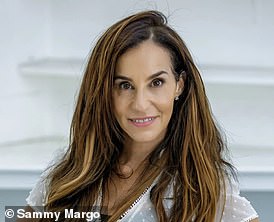
Sammy Margo, MSc MCSP MMACP HCPC AACP, established her physiotherapy practice 25 years ago and is a spokesperson for the Chartered Society of Physiotherapy.
With her hands-on experience, she went on to author The Good Sleep Guide and The Good Sleep Guide for Children.
<!- – ad: https://mads.dailymail.co.uk/v8/us/buyline/buylinehomegarden/article/other/mpu_factbox.html?id=mpu_factbox_1 – ->
Advertisement
“When winter sets in, our exposure to natural sunlight drops, and that can really throw our body clock off balance. Less light means the hypothalamus doesn’t regulate hormones as effectively, leading to higher levels of melatonin – our ‘sleepy hormone’ – and lower levels of serotonin, a mood neurotransmitter that helps keep us feeling upbeat. An SAD lamp may mimic natural daylight, and may help to reset the body’s internal rhythm, boost your mood, and reduce that lingering winter grogginess.”
SAD lamps are specialised light therapy devices designed to help ease the symptoms of seasonal affective disorder. While not everyone is convinced by their effectiveness, they are designed to work by producing a bright light that mimics natural daylight.
This can help regulate the body clock and support mood, focus and energy levels during darker months. Most people use a SAD lamp for around 20 to 30 minutes a day, usually in the morning, as part of their daily routine.
I’ve tried and tested the best SAD lamps and sunrise clocks from expert-approved 10,000 lux lights to gentle wake-up lights.
Best SAD lamps and sunrise clocks: At a glanceHow we test
Our testing methods are designed to put every product through its paces in real world conditions. This means using them for at least a week, often longer at home, on our commutes and in the office. While we can’t test the medical claims of SAD lamps, we’ve tested them at home using them as instructed. We also look at quality, value for money, design and features to help you make an informed buying decision.

Testing the Groov-e
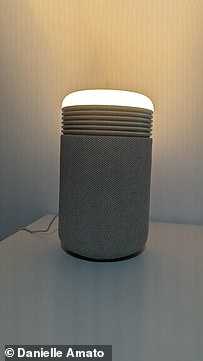
Blueair…

And Beurer
Why trust us
Our team of experts have decades of experience between them. Whether it’s home, health, fashion tech or beauty – our reviewers use their years of experience to give you an honest, unbiased opinion on the products to buy and the ones to avoid.
The best SAD lamps and sunrise clocks to buy in 20251. Best SAD lamp for most people: Lumie Mini Lamp Lumie Mini lampProduct SpecsMax lux level10,000 at 12cmDimensions16.4 x 9.4 x 22.5cm (WDH)Light colourWhiteWhat we love
Lumie Mini lampProduct SpecsMax lux level10,000 at 12cmDimensions16.4 x 9.4 x 22.5cm (WDH)Light colourWhiteWhat we love
Meets recommended brightness10,000 lux
Comact designUse it anywhere
Review
I’m a big fan of anything that claims to be compact and this dinky Lumie lamp definitely is a small as it says. It won’t take up much room at all on a bedside table or desk and has a decent size lead to plug in anywhere.
As well as delivering the recommended 10,000 lux at 12cm, I also like that the Lumie Mini is easy to use – there’s just one button for turning it on and off. IT’s a tads pricier than some of the others on this list but it has a premium design that looks great anywhere.
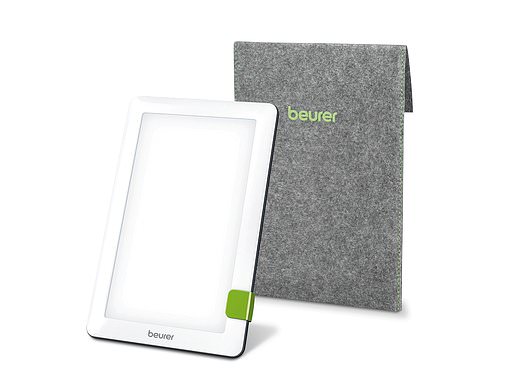 Beurer TL30UK SAD LampProduct SpecsMax lux level10,000 at 10cmDimensions15.6 x 2.6 x 23.6cm (WDH)Light colourWhiteReview
Beurer TL30UK SAD LampProduct SpecsMax lux level10,000 at 10cmDimensions15.6 x 2.6 x 23.6cm (WDH)Light colourWhiteReview
Affordable and easy to use, this SAD lamp from Beurer is another excellent option if you’re after a light that delivers 10,000 lux. This one requires you to sit at 10cm to get the full benefit, which is a bit close but you can still get a good dose of light further away.
While it’s not quick as sleek as the Lumie Mini, it’s still a great value option and comes with a little carry case for light therapy on the go. No frills here either, just one button operation on and off.
3. Best sunrise clock with air purifier: Blueair Mini Restful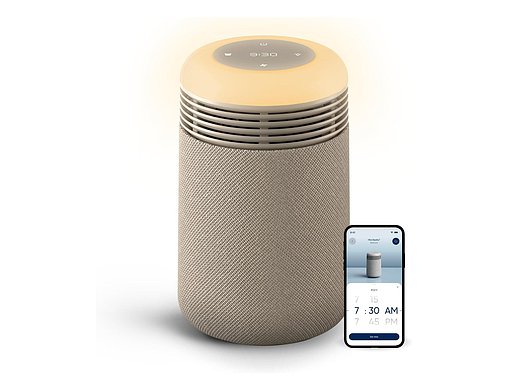 Blueair Mini RestfulProduct SpecsMax lux levelN/ADimensions17 x 17 x 28.3cm (WDH)Light colourWarm whiteWhat we love
Blueair Mini RestfulProduct SpecsMax lux levelN/ADimensions17 x 17 x 28.3cm (WDH)Light colourWarm whiteWhat we love
Lots of featuresCalming noises, light and air purification
CompactCan be stored on a bedside table
Review
If you’re after a wake up light rather than a lamp specifically for SAD, this lamp/air purifier combo from Blueair is ideal. I loved using it in my tests and like the fact it’s multiple products in one.
Not only does it clean your air from dust, pollen and other allergies – up to 31 m² in 30 minutes – but it can also gently wake you up with light and soothing sounds.
There are four purifier settings in total and on the lowest-setting it can barely be heard, though higher settings are audible. You can use the app to set the light to get gradually brighter over 30 minutes and pair this with birdsong and other sounds via the app.
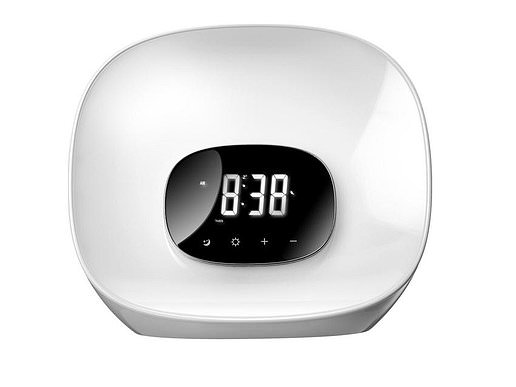 Groov-e Light Curve wake up lamp and clockProduct SpecsMax lux levelN/ADimensions20.4 x 11.2 x 18cm (WDH)Light colourMultipleReview
Groov-e Light Curve wake up lamp and clockProduct SpecsMax lux levelN/ADimensions20.4 x 11.2 x 18cm (WDH)Light colourMultipleReview
This affordable alarm clock and wake up light combo from Groov-e really impressed me despite its price. It’s a bit confusing to use at first, but once you’ve got the hang on it it has loads of customisable features including light colours sounds and more.
It does feel a cheaper than some of the others I tested on the list but this is reflected in the lower price. I liked that it could set the light to wake me up gradually and the design is quite fun – reminds me of the 90s.
 Philips Twilight sleep and wake-up lightProduct SpecsMax lux levelN/ADimensions16.4 x 15.9 x 33cm (WDH)Light colourMultipleReview
Philips Twilight sleep and wake-up lightProduct SpecsMax lux levelN/ADimensions16.4 x 15.9 x 33cm (WDH)Light colourMultipleReview
If you’re looking for a new lamp and also want it to double as a soothing wake-up light in the winter months, this seriously stylish lamp from Philips is the one I recommend.
It’s our prestige pick due to its beautiful design, colour range and the fact it’s compatible with the Hue smart light system. With this lamp, you set customised routines, so you can wake up to the changing colours and brightness of the sun – go from a soft dawn hue to a bright daylight white.
It’s of course, quite expensive for a lamp but it is fully compatible with the Hue Bridge and works with or without WiFi.
Verdict
If you’re looking to save a bit of money, my choice would be the Beurer SAD lamp. It’s affordable compared to other models and it does the job with 10,000 lux at 10cm distance.
The best all rounder is the Lumie Mini – it’s a bit more expensive but the build quality is great, it’s sleeker, easy to transport and just feels a bit more premium.
FAQsAre SAD lamps and wake up lights the same thing?
Although both use light as a tool for wellbeing, they serve different purposes. SAD lamps provide very bright light measured in lux and are intended specifically for light therapy. Wake up lights are designed to simulate a sunrise and help you wake gradually but they do not usually reach the brightness levels needed for therapeutic use.
A wake up light can be a helpful addition to anyone’s morning routine but it’s not a replacement for a therapeutic SAD lamp.

The soft glow of a sunrise lamp is better than a SAD lamp for some
How to choose a SAD lamp
The most important factor is brightness. Look for a lamp that delivers at least 10,000 lux at a comfortable sitting distance, as this brightness level is designed to mimic sunlight and is the amount most commonly suggested by experts who study SAD.
You should also consider the size of the light surface, because a larger panel is easier to use without needing to sit very close – this is why a lot of traditional SAD lamps look so similar.
You should also check that the lamp is medically certified for light therapy and has been tested for UV protection. You might also want to think about features such as adjustable brightness, portability and whether it fits easily on a desk or bedside table.
Are SAD lamps dangerous
When used as directed SAD lamps are generally considered safe. They are designed to filter out harmful UV light so they do not pose the same risks as direct sun exposure. Some people may experience mild side effects such as eye strain or headaches, especially when starting treatment or sitting too close to the lamp.
Those with existing eye conditions or people taking medication that increases light sensitivity should speak to a healthcare professional before using one. In normal circumstances and with proper use, SAD lamps are a low risk way to support mood during winter.
Best time to use a SAD lamp
Sammy Margo has this advice: “The best time to use a SAD lamp is in the morning, ideally within the first hour after waking. Spending 20-30 minutes in front of the light may help signal to your brain that it’s daytime, even when it’s still dark outside, helping you feel more alert and energised for the day ahead.”
We also asked Sammy if she had any other tips for improving sleep health. She said:
“Winter sleep health is all about balancing activity with rest. Try some lightweight pyjamas and add layers to your bedding to prevent overheating – a light tog option is perfect for keeping you comfortably cool while still feeling cosy.
Gradually move your bedtime earlier by 15–20 minutes to reset your rhythm, gently training your body clock to adapt to darker mornings and helping you fall asleep, and wake up, more easily.
Introduce bright light in the mornings, which SAD lamps could work perfectly for. Fill your bedroom with uplifting, tropical scents like coconut or eucalyptus to lift your mood and finish your evening with a gentle stretch to help you drift off with ease. Small tweaks like these can make a big difference to how rested and revitalised you feel.”
